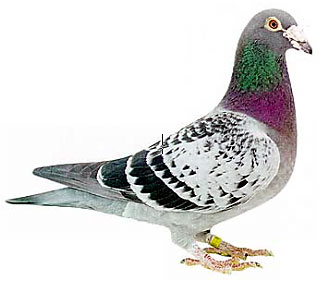What you need for racing pigeons
By Catalogs Editorial Staff

What you need for racing pigeons and training them
A bite from the racing bug may lead you right past the race tracks to a different kind of starting line. Bird lovers all over the world are satisfying their need for speed in a very different way. Pigeon racing involves releasing birds trained to fly home over a measured distance.
The people drawn to this sport tend to share a love of animals and the simple spirit of competition. Training the birds is a fun family activity that can evolve over time. Keep in mind that many people start out as hobbyists who first learn the basics of care and training before looking into clubs and competitions.
If you’re curious about getting into this sport and raising a racing family, here’s what you need for racing pigeons from proper food and shelter to racing bird medical treatments.
Food
Conditioned flyers will eat what you give them, but they don’t actually need a lot of food. In the beginning, you may consider giving them a little extra food as a reward for hard work and a way to show them love. Unfortunately, this type of bird gets fat fast by even the slightest over-feeding.
~
Grain mixes or simple peas and wheat will provide the nourishment they need to stay strong and fuel training. They adapt well to different mixes so don’t feel stuck with a particular brand if you don’t like how it effects your birds.
The right breed
The right bird is absolutely what you need for racing pigeons. You can’t simply take a street pigeon under your wing and watch it soar as a racer; it requires a special breed that’s bred specifically to race. They’re known as the Racing Homer and they’re not your ordinary house pet.
Experienced breeders condition them to go between 100 and 1000 kilometers. This may seem like a long distance, but winners need to have speed on their side as much as endurance – races are often lost and won by seconds.
Seasoned racers recommend beginners get eggs or late bred birds from top performing flyers. These birds start competing at around 6 months old and can continue racing for about 10 years, depending on the difficulty of conditions.
Medical care
The racing homer is just as susceptible to infection and illness as any animal. There are a number of powders to treat and prevent problems from cankers and paratyphoid, to E. Coli. This medicine is either dissolved in their water or mixed in their food. Consult a veterinarian for dosage and recommendations as these medicines shouldn’t be combined.
One simple way to prevent complications is to change their water often. This is where bacteria breeds and diseases spread so keeping it fresh will save your grief in the long run.
Loft
This type of bird is typically kept in a loft. The size and number of rooms will depend on how many you keep. An example of a good starter loft is two rooms ? one for the mature couples during breeding and racing season and the other room for young ones after you’ve weaned them. In winter, many will separate them by male and female rather than age.
Each room should have a nest box for individuals to build their own nests. As they’re territorial by nature, leave enough room in a couple’s box so they can each have their own nest. Most lofts will also include a sputnik, which is a trap and landing board with a wood frame and wire that won’t allow them to get back out once they return.
What you need for racing pigeons is more extensive, but this primer will get you started. Once you’ve started a raising a bird family and are ready to begin the training process, you’ll find all kinds of learning resources online and within the community. You can join the American Racing Pigeon Union for one on one mentoring, access to the annual conventions and local events.
Popular Savings Offers











